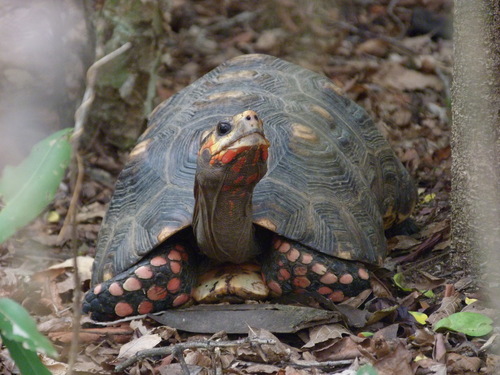
Red-footed Tortoise
Chelonoidis carbonarius, the Red-footed Tortoise, enchants with vivid hues and unique social signals. Residing in South America, it plays a vital ecological role in seed dispersal, aiding forest growth and diversity. Its striking colors and behaviors make it a charismatic forest dweller.
30 years
Lifespan
9.07185 kg
Weight
Brown, Yellow, Red
Color
Characteristics
The Red-footed Tortoise, or Chelonoidis carbonarius, inhabits South America’s tropical forests and savannas. Known for its vibrant red, orange, or yellow scales on limbs and head, it exhibits fascinating social behaviors, including head-bobbing. These tortoises are crucial seed dispersers, contributing to forest regeneration.
Distribution Range of the Red-footed Tortoise
Chelonoidis carbonarius, commonly known as the Red-footed Tortoise, is native to South America. Its geographical distribution includes countries such as Venezuela, Brazil, Colombia, Guyana, Suriname, French Guiana, and parts of Peru, Bolivia, and Paraguay. The species is also found on some Caribbean islands, likely due to human introduction.
Red-footed Tortoise's Habitat
Environmental Conditions
The Red-footed Tortoise inhabits tropical and subtropical forests, savannas, and grasslands. It thrives in environments that provide both humid and dry conditions, typically characterized by moderate to high temperatures and seasonal rainfall.
Ecological Niche
Chelonoidis carbonarius occupies an ecological niche as a herbivorous scavenger, feeding on a diverse diet that includes fruits, flowers, fungi, and occasionally carrion. Its role in the ecosystem includes seed dispersal, contributing to vegetation dynamics in its native habitats. The tortoise's adaptability to different moisture levels and its ability to exploit a variety of food resources help it survive in diverse environmental conditions.
Copyright @ Nature Style Limited. All Rights Reserved.
 English
English